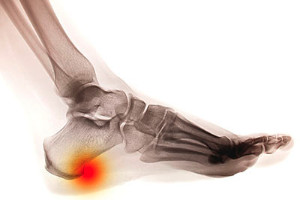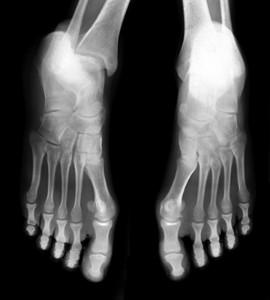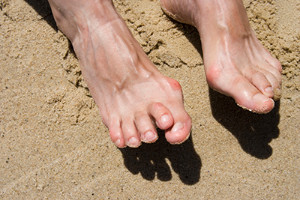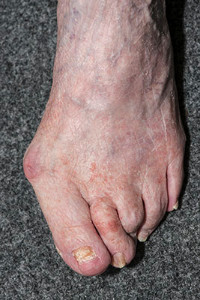 Heel spurs are potentially painful abnormalities that result from calcium deposits forming a protrusion on the underside of the heel bone. They are most common among athletes and people who do a lot of running. They are typically caused by stretching of the plantar fascia or tearing of the heel bone membrane. Depending on the severity of the heel spur, surgery may need to be performed in order to remove the calcium deposits. If you have pain in your heel, seeing a podiatrist is highly recommended. In the meantime, there are some remedies that may be able to help with the pain. These include: soaking your feet in an epsom salt bath, an apple cider vinegar bath, or applying an ice pack to the affected area.
Heel spurs are potentially painful abnormalities that result from calcium deposits forming a protrusion on the underside of the heel bone. They are most common among athletes and people who do a lot of running. They are typically caused by stretching of the plantar fascia or tearing of the heel bone membrane. Depending on the severity of the heel spur, surgery may need to be performed in order to remove the calcium deposits. If you have pain in your heel, seeing a podiatrist is highly recommended. In the meantime, there are some remedies that may be able to help with the pain. These include: soaking your feet in an epsom salt bath, an apple cider vinegar bath, or applying an ice pack to the affected area.
Heel spurs can be incredibly painful and sometimes may make you unable to participate in physical activities. To get medical care for your heel spurs, contact one of our podiatrists from Canonsburg Podiatry Associates. Our doctors will do everything possible to treat your condition.
Heels Spurs
Heel spurs are formed by calcium deposits on the back of the foot where the heel is. This can also be caused by small fragments of bone breaking off one section of the foot, attaching onto the back of the foot. Heel spurs can also be bone growth on the back of the foot and may grow in the direction of the arch of the foot.
Older individuals usually suffer from heel spurs and pain sometimes intensifies with age. One of the main condition's spurs are related to is plantar fasciitis.
Pain
The pain associated with spurs is often because of weight placed on the feet. When someone is walking, their entire weight is concentrated on the feet. Bone spurs then have the tendency to affect other bones and tissues around the foot. As the pain continues, the feet will become tender and sensitive over time.
Treatments
There are many ways to treat heel spurs. If one is suffering from heel spurs in conjunction with pain, there are several methods for healing. Medication, surgery, and herbal care are some options.
If you have any questions feel free to contact our office located in Canonsburg and McMurray, PA . We offer the latest in diagnostic and treatment technology to meet your needs.



